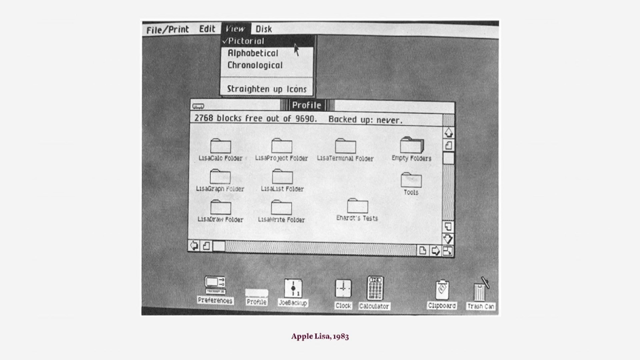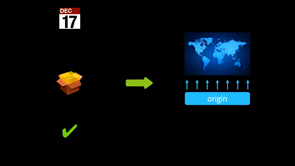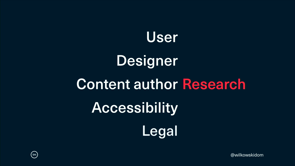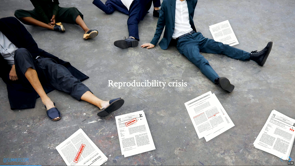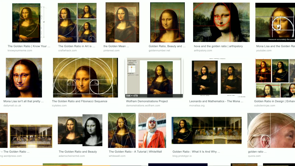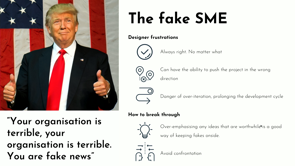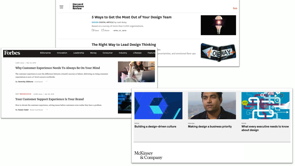Abuse and Disinformation at Twitter: An Inside Story
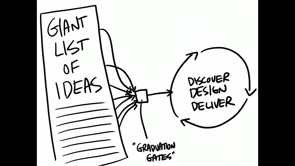
(bubbly electronic music) (audience applauding) - Alright, thanks for having me.
I just want to say thank you to Eva for that talk. We actually communicated before this, because I wanted to make sure our two talks would go together pretty well.
And what I'm noticing is I have a very like upbeat, and sometimes joke filled delivery, and now I'm feeling particularly bad about that, because I think that talk was really important, and please don't take my tone as...
Please don't take my tone the wrong way, because I was noticing during that that was, it was a really important thing, and I don't want to overshadow that.
Alright, so I have an interesting thing with this talk. It's 25 minutes, and I have a longer amount of time. So I had different ideas of what I could do. I could either expand the talk with a bunch of filler, or I could do what I'm gonna do here, which is I want to do this talk, and then I'm gonna say thank you.
And there's a big obvious slide that says conclusion, and I'm gonna do a little bow, and then hopefully you'll applaud.
And at that point I'm gonna do sort of an encore, like a separate little talk.
It also has to do with Twitter.
It's a lot of fun I think, but it's all kind of on the same topic.
So in this particular talk, we're gonna dive in by talking about a really weird insight that I learned about terrorists. Not all terrorists of course, but there's this one kind of terrorist that shows up on Twitter, and it's like, hey, I'm a terrorist.
We block them pretty quickly.
And then they come right back, and they're like, I'm still a terrorist.
And we're like, cool, you're still blocked.
And I was asking someone that studies terrorists, at Twitter, I was asking, what is going on here? Why would you do this? Why would you just spend all day coming back, and back, and back? And they said, well, you have to understand their motivation.
To them, it's like a video game.
Getting blocked from Twitter three times is not as good as getting blocked from Twitter five times. They're trying to kind of like stick it to the man. So to them they see this as a high score, and I thought, dang, because we have always been taught to teach to, to understand people's motivations, and to design to it, but it's really easy to lose the motivation when you start caring a lot.
See, when you think about motivation for something like, oh, it's gonna be an app where you press this button, and a thing happens.
Motivation, I think is easier.
But when you're dealing with wicked problems, things like terrorism, and climate change, and abuse, and all these horrible topics, it's almost like you get so passionate, you start othering people.
See what that terrorism thing I was designing for evil people.
There's no feature, there's no way forward on that.
I had sort of written them off as evil so I couldn't design anything.
But when I understood the motivation, well think about yourself.
Think about if you're a designer, and you think a terrorist wants to stay on the system, you might block them.
But once you learn that they don't want to stay on the system, they're actually trying to get blocked, your mind starts going.
You start thinking of different features, ones that actually addressed the problem better. Now, speaking of motivation, let's talk about why I'm even here.
I think a lot of people is not the only motivation there on onstage, but this ends up happening. You sort of do this thing where you're like, I'm a thought leader.
I'm very smart. I want you to like me.
I want you to think I'm very, very cool, so maybe you'll hire me, or like buy books, or follow me on Twitter, or whatever it is. And there's nothing wrong with that.
There's nothing wrong with someone on stage trying to have this benefit, their career in some way.
Nothing wrong with it, but I want to make something really clear.
I don't look very good in this talk.
There's a fair amount of places, but I'm not really happy that I have to share it. But I think it's good.
This is very much more of my mentality here. When I was at Twitter, I kept seeing stuff that was very different from what people thought was going on at Twitter. We all sort of watched from the outside like, what's going on there? And when I got into the inside, I realised, oh man, if only I could write like a documentary about this. And I waited until I didn't have to worry about NDA things. And I started doing this talk to try to explain some of these things, because it was actually way more complex than I thought. Now we have to go back to 2016.
That's when I worked there.
I was there between 2014, and almost 2018.
Right in the middle of that, I joined the abuse team.
Now the thing about the abuse team is, so I jumped on the team, ah, here I am.
And it was very excited to help out.
I looked around, and first thing I want to call out is the team was way more diverse than I make it look. But I showed up, and if you've ever joined a team, especially if you care so deeply about a topic as we all did, if you join a team, you often find yourself sort of, you know, pitching ideas, you're excited, like you're on the team.
You want to make impact, and it's not just for your ego, like you're there, because you really want to help your teammates, right? Well, I've seen this at a lot of teams.
Sometimes it goes a bit too far, and at Twitter it was insane.
Everybody on this team cared so much, it led to something that I call pickle jarring. If you see somebody trying to open a pickle jar, and they're struggling with it, oftentimes you're like, okay, let me try it.
Give me that! And the thing is there's this weird mixture between, trying to help, and at this little voice in the back of your head that's like, what is wrong with you? Clearly you're doing it wrong.
That's what happened on this team.
Everyone that joined the team was so motivated to finally fix abuse that there wasn't a lot of listening. People would join the team, and be like, have we tried this, have we tried that? And everyone was pitching the same things.
These are all things that we had either tried, and discarded, or the data didn't back it up, or whatever.
We were coming from a position of knowledge, but everyone that joined the team was like, good thing I'm here 'cause you guys have no idea what you're doing.
It was not good.
So we had to do two things before we even really got rolling. Again, I was the new one. There's a couple people that joined with me, but there was a team of people that had been doing this for years, and they are actually really good at their jobs, even though it doesn't seem like it.
One of the things that we did is we said, look, no more scratching your own itch.
You don't get to join the team, and do a little hack week prototype of how you're gonna fix abuse. It was backfiring. You had too many people going off in too many directions. So we made a list, or like here's the big list of ideas, and before we go into a discovery process, we're gonna put together, they call it EPD at Twitter, Engineering Product and Design that the head people, those three people would get together, and authorise, okay, now we're gonna go investigate this.
No more hacking on your own.
We're gonna do this together.
It added bureaucracy, but it actually sped things up. Another thing we had to deal with is, if you've ever worked in a company that's somewhat large, you constantly are having other teams push things out that you were not aware were going out, and it kind of messes you up.
So this was a pretty big problem for us.
And so what we did is we thought, alright, we need to document.
And by the way, I forget which talks talked about documentation, but I'm so excited about these. I have a vision that you could go to any companies sort of, you know, the Googles, and the Facebooks, whatever.
I have a vision that you should be able to go into a library, and just see books describing every single decision that has been made, and why, like detailed case studies, like Harvard business review for every product. And so what we realised is, look, this is what most people do.
They're like, this is what we shipped.
Good luck.
And if you really know what you're doing, and you've gone to design school, you might add this in.
Okay, so here's the problem we're trying to solve, and here's what we shipped.
Good luck.
What we started doing is we invested in documentation to a degree that is just insane.
We went, and wrote everything.
Like nothing could be left in slack just to just to disappear into the archives. We were documenting every single thing, not what we were doing, but why we were doing it. The idea being when people join the team, we can say, hey look, we know you have a lot of great ideas, but first read this. This is not gonna say what we did, it's gonna say why we did it.
So you can understand how we got here, and help us do a better job.
I have a vision that maybe someday we'll get really good at this.
I think that'd be great.
By by we, I mean everybody, and all of tech.
So then we went through a standard design process, but you've seen a million times, and you don't need to hear me rehash.
Now we landed on this two minute video that we made. We sent it around internally, and it was called Amy's First Minute.
And it poses to this idea that if someone experiences abuse for the very first time, we only have one minute to prove that we deserve to keep them on the system.
And if we can't do it within one minute, they're gonna leave.
And you know what? They should leave, because we're not doing a good job with their safety. And that set a really interesting framing of every feature. Is this gonna make somebody feel better, or have a better experience within one minute, yes, or no? And what we discovered when I prepared for this talk, and looked everything up.
We did maybe 30 to 50 features within a year. But you could bucket them in three broad categories. Number one, muting people.
Keywords and conversations is a tremendous help for vectors of abuse.
A lot of people, a lot of celebrities.
We had one celebrity say, there's only six things that they call me.
And so the ability to mute those six words fundamentally changed your experience on the platform. Also conversations, there's a term called dog piling. Dog Piling of course is when a bunch of people kind of attack you all at once.
The ability to mute a conversation, it was very hard technically to do, but it really helped a lot.
We saw it in the data.
Number two, notification filters.
We had this insight, hold on.
Why is it that someone that's only been on the system for like 30 seconds, and literally the only action that they have taken is to attack you? Why is that something that can show up in a push notification on your phone? Like, shouldn't we have more granularity there? Internally we called that no eggs, no babies, because those used to be called, they used to be eggs.
And then finally reporting.
I made it number three.
But I think anyone who's ever tried to do any reporting on Twitter, or anywhere knows it's clearly number one, it's the reporting as completely broken in tech. It's really, really bad for a lot of reasons. It's hard to do.
It's hard to do when a lot of people are attacking you all at once.
It's hard to know what's against policy.
It's very inconsistently policed.
Everything about it is bad.
So we spent a lot of time there.
So we were moving along, and we did this for about a year.
We had a tight knit team.
We're feeling pretty good.
We're still devastated by how bad the problem was, but at least we had a roadmap, and we're moving forward, and then a reorg. But I'm gonna pause my presentation, and we're gonna go a little bit left field here. Remember before when I talked about motivation, and I talked about what's the motivation of like someone that's trying to look like a thought leader? You're trying to look smart, you're trying to look like you should hire me, all that stuff.
This is where it goes wrong, because I can actually choose two paths right now. I can choose the path that makes me look good, or I can choose this path that actually helps you sitting there right now trying to bring something back to your team. Someone says, oh, I heard that there was someone from Twitter. Like, what did you learn? I can give you actual information, or I could make myself look good, but I can't do both.
Too many people do this.
What they do is they come up, and they say, okay, this is like standard storytelling.
This has been happening for thousands of years. First you set the scene.
Everything was bad in Twitter-ville, there were dragons, there were goblins, and there were trolls.
So you set the scene.
It's really, really bad.
And we all know contrast, because we're designers. The contrast comes in when you say, the prophecy foretold that once a generation a hero would appear, and that's of course me, I'm so great.
So you got really big on how bad everything is, and how great you are, and that sets things up really, really nicely, and then you prove it, and you go on the hero's journey.
So whether you are fighting the cyclops, and dealing with the sirens, or in my case I show you some features, you go really big on it, and I made a novice mistake here, because if I was really gonna go big on this, I wouldn't have said design process here, and skipped by like a really quick slide about some things that we did.
I'd go really deep into it cause I'd be winning you over, and I'd be proving to you like I promise, we worked really hard, and I promise I'm a good designer.
That's what I would've done if I was trying to win you over. Then in the middle of the talk, and that's where we currently are.
You introduced the villain, and when you introduced the villain, I get to paint myself in white, and I paint the villain in black, and it's a fight between good, and evil.
Now the villain, to be clear what I'm about to say, I do not agree with. I just want to point that out. This is inaccurate, but the villain typically when you talk about this is, the CEO doesn't know what he's doing.
Everyone is motivated by money.
The reason they don't block these people is, because it really, you know, leads to more engagement. All of those things are actually inaccurate. But I could go really big on it, and I could sort of look like a hero in my own way, because at least I fought the bad guys.
That's how it would work.
And then, and I have to be very careful with this slide, because I want to make sure you understand what I'm saying here.
You talk about design ethics.
Now I want to make something really clear.
I'm not saying design ethics is a bad idea. It's a fantastic idea, but my concern is that we're gonna start using design ethics as a way to tell people they're wrong as a veto card. The designer wanted to do this.
The other designer wanted to do that.
Fortunately, I'm pure, and they're evil.
That's not gonna be a good thing.
It's really easy to write everything off.
It's like, oh, they just weren't thinking ethically. I win.
No, that's really concerning.
That's othering people.
That is literally what dictators have done since the dawn of time.
It sells books.
It doesn't actually teach anyone anything.
What I want to do is I want to teach you what actually happened. This is the part that's kind of hard for me, because this is the part where I don't look like a good designer, and I don't really feel great about that, but it's something that's actually gonna be a takeaway for you. So this is a thing that happened on my team. It happens all through tech.
Let's walk you through it.
I have to take you on three really quick thought exercises though, thought exercise number one, imagine a world where everyone was paid the same. Now, if everyone's paid the same, that means if you look at a job that's really, really hard, but a person is still choosing to do it well, when you'd get rid of the profit motive, all that's left is passion, right? So if you look at like a doctor, a doctor has to go through a whole bunch of training. You look at a doctor, you're like, I can't believe you're a doctor. Like you could do an easier job.
So if you get rid of the profit motive, all that's left is passion.
Number two, what if everyone was good at their job? This seems good.
It's actually bad.
Here's why.
They have a thing that they call the psychological, or sorry, the emotional immune system, and part of the emotional immune system is when you are faced with information that you don't want. You have to discredit it so you feel better. That leads to more othering.
For example, when you're watching a sporting event, and the referee makes a decision that you don't like, you have to say that they are blind.
They are dumb, they are stupid, they are bought off, whatever, and the more you can say the ref is horrible, the better you feel cause you're right, dammit. You couldn't possibly be biassed.
You're the one wearing the sporting.
You know the team colours.
That referee, that literally gets paid for making the right calls, they couldn't possibly make the right call. You also see it with just life.
If you go, and you try to get a job, and they say, no, you're not good enough for this job.
In a world where everyone is good at their job, they're right, you're not ready.
Ouch.
Now what do we do? Instead we say they don't know what they're missing. They're stupid, they're blind, et cetera.
The emotional immune system, it makes us happy every day.
It's also really good at writing everyone off. If they have a different opinion, it's not good.
Number three, what if everyone was empowered? We love empowerment.
You wouldn't go to a job if you weren't empowered. If I was like, Hey, I've got this position, but you're not gonna get to make any decisions, yay, you would not go to that job.
The problem with everyone being empowered is that it starts to turn into a bit of an arms race. You sorta step on each other's toes accidentally. What if I'm a farmer, and my crops, they need some water, but I'm empowered so I make it rain on my crops. Yeah, empowerment! But then I flood my neighbor's crops by accident. I didn't mean to, it's just that I was so empowered, and they're like, oh no, no worries.
And, and they just, you know, address the sun. The sun gets brighter, because they're so empowered, dries their crops out, kills your crops.
Again, they didn't mean to.
It's just that both sides are so empowered. So that thing that I just walked you through, what if money didn't matter? What if everybody was really good at their job? And what if everyone was asked to make impact? That was the big epiphany that I had on the team. I was not surrounded by people who didn't care. I wasn't surrounded by people that weren't thinking of the effects that their designs would have. Not at all.
We were literally thinking of that step one, you go to the whiteboard, and you're like, okay, how can this be misused? Our Black Mirror brainstorm was literally the job. So how is it that you take these people that are, they're good at their job, they're super passionate, they're told to make impact, and nothing moves forward? Well, I asked someone from uni, she had been like in in tech for like three years. I said, how would you compare uni to tech? And she said, uni is a bunch of people pushing, like if you're on a project, we're pushing something in one direction.
So some people are stronger, some people are weaker, but we're all pushing the same direction.
Like to call out that I'm not good at drawing cars. I said, okay, well what is tech? She said tech is too many people in a boat rowing in circles.
And I'd like to point out that this visual is inaccurate, because in this visual they all have their oars up, which is actually quite polite.
The reality is it's two seconds after this photo was taken, and you say, and go, what happens is everyone's pedalling as fast as they can, and, or you know, orders are hitting each other, and everyone's face, and it's very dramatic, because you're not actually looking to leadership. Everyone's trying to be a leader themselves, and it actually makes you go in circles.
Now, I've been on great teams.
I'm sure everyone here has been on great teams. I've also been on bad teams, and what I've started to notice is, huh, the bad teams were the ones with the most rock stars, the ones with the people that were trying so hard to be leaders.
And what happened on this abuse team is you really did have kind of an A team, and yet we weren't getting results.
But I have to call something out here.
This is not a talk about my teammates.
In fact, if you look at the team that's there right now, the designer that I worked with, she's still there. She did every one of those features that I mentioned, except for one, she's still there.
If you look at the PM that I worked with whos's amazing, still there, she is as well.
And then number three, the design researcher who I said in my review was literally the best design researcher I had ever worked with.
She's also still there.
I am the one that left.
All that stuff that I was saying about too many people. No one knows how to take orders.
Everyone's trying to be a leader.
They had that reorg happened to them.
They didn't like it, but they stayed.
They understood that it wasn't about their ego. They understood it was about just doing their best. These victims of abuse couldn't have people throwing a hissy fit, and table flipping.
They needed people to stay there, because teams are healthier, in my opinion, they're healthier when the average length of time someone's been on the team, it goes higher, and higher, and higher, because you have more of a shared understanding. I was the one that couldn't get past that.
In fact, I went back, and I looked at the reorg email, and what I discovered is that I agreed with the reorg email 80%.
I agreed with the new direction 80%, but I'm a designer.
I was trained to complain about the remaining 20%. And so I did.
Now I was still on the team for about three months. I did a bunch of documentation, and I didn't throw a hissy fit, and do a table flip.
But I did end up leaving.
And I do know that if I had stayed on the team, I would've been able to keep that sort of, you know, the wisdom that the team was building together. It would have helped everyone out if we all stuck together, but I just couldn't get through there.
Now I don't like it when people just sort of say like, everything is wrong, and like, okay, good luck.
So let's do some tangible things.
Tangibly, I would highly recommend that you read these three books.
I read them before I was on the team.
I read them while I was on the team.
And then after the team.
Number one, Animal Farm, you think it's about communism.
And it is, but it's really about humility.
When you join a team, and you're like, I can't believe they made this decision. I can't believe they did this.
I can't believe they did that.
You're Animal Farming.
And then you get in there, and you go, oh, this is actually harder than I thought. That's surprising.
How to Win Friends and Influence People is literally my favourite design book.
I don't need any more books about design thinking. Thank you very much.
But I do think we need more diplomats.
We need more people who can kind of herd the cats, do community organising, people that can disagree without being disagreeable. We need more of that.
That book is really good at it.
It's like a hundred years old.
It's very folksy, but I still love it.
And number three, The Righteous Mind.
This book is about, the little subtitle is How Good People Can Disagree on Big Things. And that's really important to learn.
You can have two good people who have strong ethics that disagree, that is possible.
And again, we have to get out of this mindset that ethics are this black, and white thing. I'm ethical.
You're not.
I win.
It's not like that.
The Righteous Mind teaches empathy in a really good way. And the thing about that word empathy is I'm a designer. I get a little frustrated when people tell me about empathy. I'm like, I'm a designer.
It's literally my job.
But I realised something.
Just like a person that says, oh, I couldn't possibly be sexist.
They're most at risk of accidentally, or not being sexist, or personally like, oh, I don't see race.
Guess what? That person's gonna be racist.
Similarly, a person that talks on, and on, and on about how empathetic they are, they're letting themselves have a big blind spot. They're actually gonna mess up.
So I'm gonna try a test on you.
These are three empathy test.
We'll see how you feel.
Empathy test number one.
I want you to imagine how you feel when I tell you this factoid.
Nickelback has sold 50 million albums.
Now I don't personally listen to Nickelback. I don't have an opinion either way, but I have noticed that everybody makes fun of Nickelback. And the thing is that's 50 million stories that you don't understand.
If you were being truly empathetic, like that would be interesting to you instead of just writing it off.
Here's another example.
Boom Comic Sans, we all agree it's bad font. Hahaha, horrible font.
But hang on, empathy hat.
Most people don't know how to instal a new font on their computer.
Most people have Windows, and it really is the only font that I can remember that's casual, right? Most of them were just clinging on quite fancy. So for a bake sale, you're not gonna use copper plate. So this should not be super hard to put yourself in the shoes of a person that might think that's a great fun, and that's okay.
Also I learned that this is really good if you are dyslexic. Somebody mentioned that cause it's irregular shapes. And number three, sportsball.
When billions of people around the world are excited about the Olympics, or about the World Cup, or whatever their sport is, and you rush to point out that you think that's really silly, that's fine, you're allowed to do it.
But I would argue that someone, a designer working at full empathetic capacity would maybe go talk to them, and learn about it, because it's a very human thing to think that sports is interesting.
You don't have to like sports, but I would argue if you think you're empathetic, maybe don't make fun of it.
I think what happens with a lot of us, and absolutely with me is they're like, yes we have empathy. I think many of us in this room have empathy. I think many of us are probably quite sensitive, but we also have taste, and we make a lot of jokes about like, oh you drink the wrong coffee, you drink horrible alcohol, you listen to the wrong band, you whatever it is.
Our taste often overloads our empathy circuits. And it sounds good in the moment, because it looks like we have great taste, but we're getting further, and further away from having empathy.
But speaking of empathy, here's that conclusion slide I talked about. Remember that terrorist right up front? I want to call something out really, really carefully here. People talk a little bit about the being intolerant of intolerance.
That whole kind of contradiction.
I want to make something really clear.
When I told you how that terrorist was thinking, that wasn't me agreeing with this evil ideology. Not at all.
It's beyond that.
I think we have to up our game.
Instead of just being like, oh, found an evil person. Ah ha, I'm so good at this.
I think we need to go further, and trace it down, and figure out what is that human emotion that's leading to this evil.
Because once you figure that out, then you can actually address it.
You can't learn while you're judging.
You can't design if you're not listening.
And that applies to everyone you come in contact with, your coworkers, your family, and yes, even Nickelback fans. Thank you very much.
(audience applauding) - All right, hey, sorry.
Can I have my thing back? There we go.
Okay, so this next one about five, or 10 minutes, it's gonna be really fast.
These are five features that I would like Twitter to try out.
They're gonna be really low fidelity, and that's gonna be the whole point.
I'm gonna talk about that in the conclusion. Number one, remove replies.
When you go on Twitter, and you say something, someone else can say a mean thing, and the feature would be, you should be able to remove that.
Now, it wouldn't be gone from all of Twitter, or just be gone from your own tweet.
This would be analogous to, I put up a house, I'm very proud of my house, and someone puts graffiti on it.
I should be able to remove it.
I should be able to get it away.
But it does open up this issue.
What about politicians? What about a politician that wants to say a thing that's a lie? And then a journalist points out that it's a lie. You don't really want the politician to be able to do that, right? Like how do you handle this? Well, I've got really good news.
Number one, there's a solution.
Number two, this is a real feature.
Remember when I said that the reorg happened, and I couldn't quite get through.
I want to talk about that a little bit more. I was talking to my wife all the way through, and I was noticing that my mental health was slipping. I was having trouble sleeping, I was having trouble talking to my friends, I was having trouble relating to my wife.
This was really getting to me.
And so that 20% where I couldn't get through, this feature got cut in that Reorg, and I was so sure that that was an unethical cut. I couldn't see through it.
Again, I now know the best thing to do would be stuck it up, and keep working.
And you know what? That's what the team did.
They had been working ever since then. That was years ago, and it just got announced a couple of weeks ago that they are in fact gonna ship this.
And how did they get around to this issue where you want Amy to be able to block abuse, and politicians to be accountable? Easy, you have a button that says show hidden tweets. So when Amy blocks a thing that's spammy, first of all, no one's gonna look, cause Amy only has nine followers.
But second, it's not that important.
But when a politician tries to bury it, oh, that's news.
You've got journalists looking at that, and I love that contextual design.
I love how the same feature can be used differently based on your number of followers, and how much people care.
I think that's fantastic.
Number two, Twitter ombudsman, Ombudsman of course, is kind of like a judge that talks about how a company is doing.
So an ombudsman would mean that Twitter does a controversial thing, which is very good at doing.
Everybody gets super upset, and then the Ombudsman writes a report, and they say, hey, I am an unbiased person. I'm not paid by Twitter.
Here's what I think about this.
And they might agree, or disagree with Twitter. That doesn't matter.
The key is that you start building precedent. If you start building precedent, you can start building a narrative around it. That's interesting.
Twitter seven out of seven times did this thing, but this time they did something different, and we need to call them to account in the media. People, you know, talking on Twitter, or whatever it is.
Precedent I think will be really important. I think putting this same ombudsman idea into every large tech company, and then have them compare notes.
You start getting caselaw, almost like we're building the code of laws for tech. I think it'd be fantastic.
Number three, third party fact checking.
It would be very obvious, you'd be looking at your timeline, and lies would call out, they'd get called out. The problem with lies of course, is that they're not nearly as objective as we like to believe.
They've done a bunch of studies into this.
The thing that you think is true, you always think it's black, and white, but it's actually not.
I think the way around this is that you just flag them with like a little indicator, and the rate of the indicator would get lit up is like this. You go into your settings, and you say, I want fact checking, and then you go, these are the people I trust, doop, doop, doop, and then later if you come across something that they've happened to write a story about, cool. You can learn more about it.
Wouldn't that be nice? We're gonna talk about that more in a minute. Number four, I think we should categorise every single tweet, and I'm not talking about Hashtags, I'm talking about a metal level that doesn't exist right now.
The way you do it is you'd look at a tweet like this, and there would also be a little labels on it. It was funny. It has to do with a rapper, and there's bikes involved.
Now are people gonna spam this? They are absolutely gonna spam this.
Yes, they will, but actually that's part of the superpower of the feature. Here's how.
When people go, and do all that stuff, then Twitter, the algorithm can see, oh wow, it looks like a lot of this stuff is garbage. Like this person over here always puts MAGA on every tweet always, and then the algorithm can understand that that person's maybe not as high value. The other thing is you would only probably see the labels of the people you follow so you, this wouldn't be like trending where anybody can do it. This would be your, the people you follow believe that these are the labels, so you're actually seeing a smaller set, but that often sends alarm bells going, because, hold on.
Isn't that an echo chamber? Let's talk about echo chambers.
Echo chambers has turned into a word that just means a community that I disagree with.
If we made a web direction slack, and we all talked about the web, I wouldn't say that's an echo chamber.
I'd call it a community.
Same with church, same with a Nickelback group, whatever. We're just talking about the things that we want to talk about. That's just community.
The issue with echo chambers is when they decided to go to war with each other, and the anger goes up, and now they're not listening to each other. That's the bigger issue, and this labelling thing could create a connective tissue between them.
With the connective tissue, you can put together tweets that have nothing to do with each other, and in fact that algorithm could be tweaked to purposely be bringing through different things. It could actually jump these silos, because right now, if you think about the vocabulary on Twitter, there's, I follow the person, I retweet the person, or I yell about stuff. That's not enough fidelity for the human experience, but if you add labels, you can start making connective tissue, and then imagine a Twitter where you could only see, you could choose, I only want to see stuff labelled as thoughtful. It's totally possible.
This is not technically that complicated.
It's not even hard to imagine.
If you only could see stuff through that lens, that's a very different Twitter.
But now, and this is very exciting to me, what if clickbait turned into, not a bad word that we roll our eyes at, but such a bad word, it doesn't make any money? (gasping) Imagine if something gets tagged with clickbait. No one goes, because everybody turned off their clickbait filter. Imagine being an editor of a company that makes clickbait, and you have to tell your writers, Hey, I know those old articles used to work back in 2019, but we really got to get on that thoughtful tag man. Capitalism, it can be used for good.
Imagine you go to search results, and you say like web directions.
Right now at sorts by the best thing that it knows how. That's cool.
What if you could sort by queer? What if you could start by people of colour? The only way to do that right now is if they literally wrote those words in.
If there was metadata, and everyone was doing it in a crowd sourced way, you could make sure some of this stuff bubbled to the top, and again it would jump silos.
That leads us to the final one, which is the best news product.
And I know that's big words, but bear with me here.
Twitter for a long time.
It's just showing you a timeline.
It has over time started moving in this direction, trying to show you more insight, and context. A lot of other social networks have noticed that there's good ways to kind of like packaged stories a little bit.
Here's what I'm excited about.
It's Friday, right? Yeah, it's Friday.
I want to pick up my phone tomorrow morning, and be presented with this.
Hey John, we know what tweets you looked at on Friday, and that's not even creepy.
We're just like, we just know what you looked at it. This doesn't have to be complicated.
By the way, there's some contextual information Saturday morning that you might want to know about. That fire is fine, and by the way, you a saw lie, so we're gonna tell you it was a lie.
Nothing like this exists right now.
We have corrections, but no one reads corrections. They have this quote that a lie can get around the world twice before the truth has a chance to put its pants on. You can make a feature where literally it's like, hey, here's what we know you're looking at.
Here's what we know has changed, and it's been fact checked by BBC.
It'd be great.
Finally, I want to be able to pivot on news stories. If there's a news story on a truck that tips over, and pineapples come out, cool, show me so much data about it.
I want to know what people that like this, people that don't like this.
I want to know the groups that they're coming from. Twitter has all these stats, they're internally at Twitter on big screens. Make it visible.
Let everybody see the people that think this thing is good, or bad.
You have all that fact checking built into it. You have all that labelling built into it.
You can show every single article discussing it, and not even Google has that kind of power right now. Google doesn't have that data.
You could completely pivot off things.
Every user would be more informed, and I don't mean clickbait informed.
I mean like actually informed, because things are getting fact checked, and then journalists themselves, their whole game would be upped.
It'd be crazy.
Now I don't believe that everything that I just said would necessarily work.
I'm actually saying a bunch of stuff that I just think is interesting, and that's what I want to talk about next.
That's the last thing I'm gonna say.
When I'm looking at a designer to hire, or to collaborate with, or whatever, and I'm looking for people, and I'm trying to get a sense of who they are. I'm seeing way too much, not just on Twitter, but like in life like I like this, and I don't like that, and it tends to be very black, and white, like this is the greatest song ever, and then like this is a travesty, and it's really hard to find the humanity in that. Every so often it seems like one in a thousand, or one in 10,000, someone pops up, and they just like have an idea, and gosh, that's so much more valuable.
I love it when people do this stuff.
If they do it with humility, and kindness, and they can find a way to say, I have a proposal. There's nothing wrong with being angry by the way, I'm just saying like when an article says, well on one hand this, on one hand that, here's my thoughtful proposal, it inspires me. Another metaphor for this, is I think right now, all these hot takes, I sort of see them like a little seedling, and imagine just like a big field of just these little tiny seedlings, and they're all mad, just grumble, grumble, grumble, grumble.
There's no nourishment in it.
When I go on the Internet, and it's just like I'm mad, I'm mad, I'm mad, I'm mad, I'm mad.
I'm like, cool.
What next? What I think is really interesting is when somebody takes the fact that they don't like something, and then they water it, and they spend time with it, and they nurture it, and then it grows into a thoughtful critique, that then they can share, and in inspires other people to do it as well. I think this kind of stuff, especially 'cause we're designers, and we're supposed to be good at communicating, this type of stuff, I think really works.
It's sets your portfolio apart.
It sets the way you think apart, and it pushes things forward.
I'll tell you right now, everybody that made a proposal that Twitter should follow. I guarantee you everyone at Twitter read it, 'cause I was there.
That's the stuff that pushes things forward, way more than saying this, and then re tweeting an angry thing.
So please do that more.
If you do something like this, let me know, 'cause I want to be the first one to read it. Thank you very much.
(audience applauding) (bubbly electronic music)







